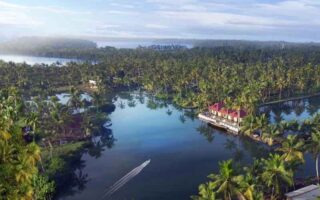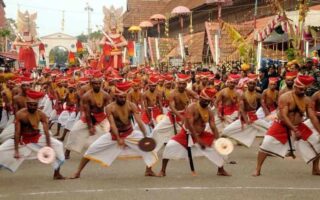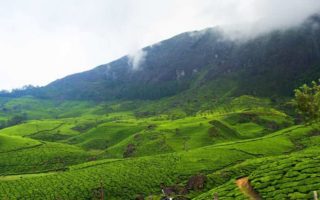Life is a celebration in Kerala. If you give a close look at the Calendar of Kerala, you will find that the festivals in Kerala are never ending, right from the beginning of the year the Calendar has major festivals to be celebrated up to the end of the year. Kerala has many breathe taking visuals like swaying white plumes in the air, fleets of huge elephants and so on. There is no way that the People in the Kerala are without celebration and joy. The excitement in this region is so vast that it can be seen during Onam, exemplified in the traditional boat race, long festivals, fun fare and so much excitement all around.
Aarattu
- Celebrated in: Thiruvananthapuram, Kerala
- Centre of activity: Shree Padmanabhaswamy Temple
- Duration: 10 days
- Specialty: The Head of Travancore Royal Family Escorts the Procession of Idols.
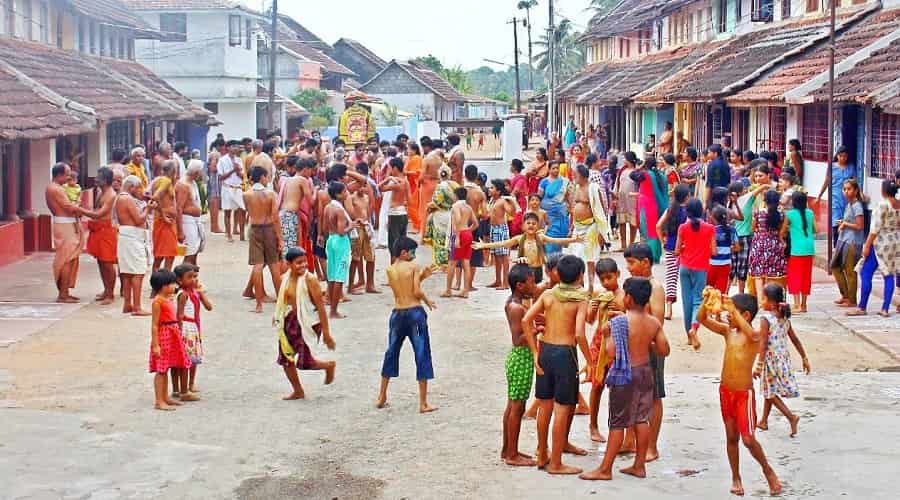
The rituals which are the most important in the festivals of Kerala are the Pallivetta which is the Royal Hunt and the Aarattu which is the Holy Bath. As the Temples in Kerala are the centres of all the fairs and festivals in Kerala each and every festival is related to the temples in Kerala, this too showcases the rich Culture of Kerala in different ways. The Shree Padmanabhaswamy Temple in Kerala has the relevance of the Aarattu Festival in Thiruvananthapuram.
This festival is a ritual more important than a festival which the people follow. This temple has a religious site during the festival with splendour and sophistication, so this Aarattu gains greater enormity at Thiruvananthapuram. The unique feature of this festival is that the head of the royal family comes along the procession where the idols of the temple are taken for a holy bath; these idols are taken to the Shankumugham Beach where the holy bath is given. The festival begins with a flag hosting ceremony and a sweet dish is always offered to the Lord.
Celebrated twice a year the Aarattu festival is celebrated in the months of October-November and then again in the month of March-April both the times the festival lasts for 10 days. You should not take a chance to miss this festival.
Aranmula Boat Race
- Feted in: Kerala, India
- Centre of bustle: Aranmula Village
- Held in the month of: (August-September)
- Major attractions: Boat Races Hundred feet long
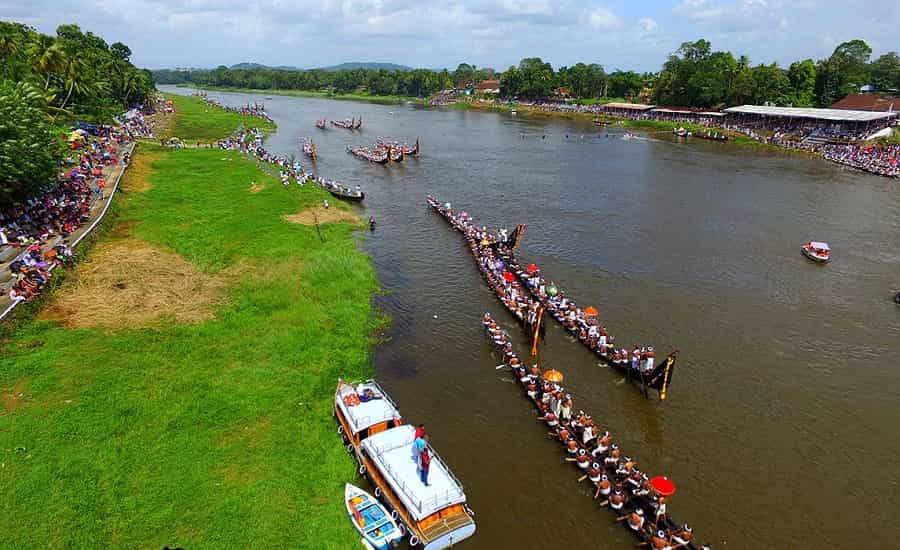
In the picturesque Aranmula village in the month of (August or September), the Aranmula Boat Race is staged. This grand carnival is a major element of Aranmula temple festival. This is being carried on the snake boats which are called the ‘Palliyodam’, here the masses swarm along the shoreline of the Pamba River.
Each boat is nearly 100 ft long, with a tampering bow and stem curved; this resembles the covering of the snake. This is the remarkable feat of craftsmanship. Huge boats are managed by the squad of extra hundred men; it is festooned with gold and silk spangled umbrellas. There is also a snake boat race which is added in the festival. The objective being not to win the race but just keep the speed and to reach the finish line simultaneously, this keeps the people cheering and develops a healthy attitude within them. The oarsmen who sing traditional songs on the boat wear white mundu and turbans.
The Aranmula Boat Race is the oldest boat race in Kerala, which is held during Onam. This combines sportsmanship, devotion, and friendship and makes this event an unforgettable one.
Arthunkal Perunnal
- Celebrated: Alappuzha, Kerala
- Held in: January
- Duration: 10 days
- Venue: St. Andrew’s Forane Church
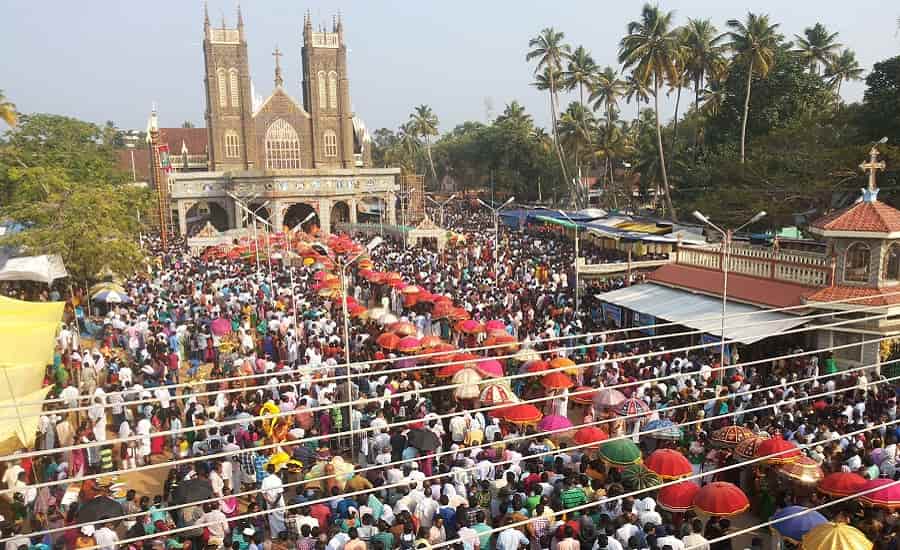
In the month of January near Alappuzha at the Arthunkal, is the annual festival of the St. Andrews Forane Church. On the tenth day there is the festival which is held in the name of St. Sebastian this festival is attended by more than thousands of devotees from all parts of the state.
On the last day of the Arthunkal Perunnal festival there is a large procession which is carried out and taken out to the nearby beach, here people express their gratitude by crawling on their knees.
Also Read: Most Famous Beaches of Kerala
Attukal Pongala
- Celebrated in: Thiruvananthapuram, Kerala
- Centre of activity: Attukal Bhagavathy Temple
- Specialty: Exclusive festival for women
- Held in: February-March
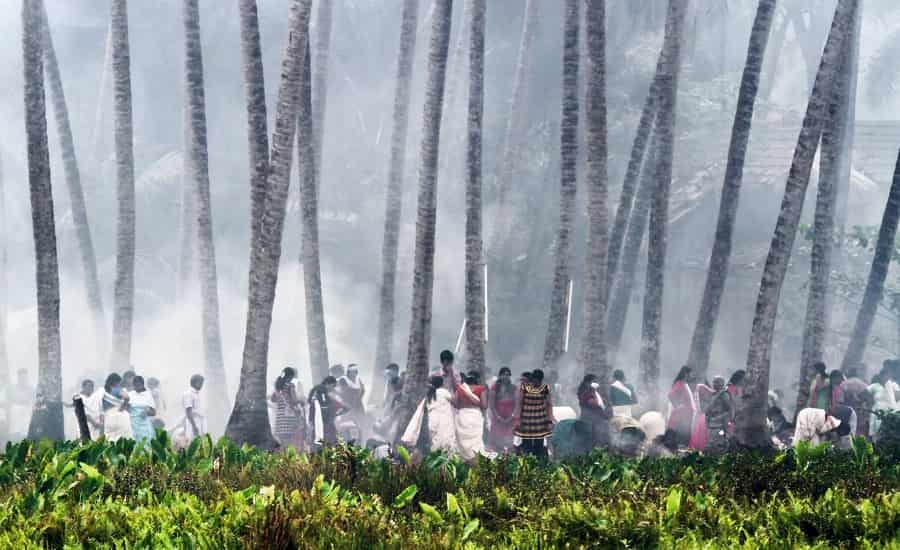
Being situated in Thiruvananthapuram city, the Attukal Bhagavathy Temple is dedicated to the Goddess Bhagavathi, this temple has a exclusive which is held specially for women’s, is Attukal Pongala. The name Pongala means to boil over and this is to the reference to the offerings of the porridge made of sweet brown molasses, rice, nuts, raisins and coconut gratings.
This festival is held in the month of February and March, in Kerala it is celebrated with lots of fervour and fun. This is the festival of 10 days which according to the Malayalam month of the Makaram-Kumbham and this comes to an end with the sacrificial offering of the Kuruthitharpanam. Has mentioned above that the Attukal Pongala is a special festival for women’s, so women’s on huge numbers visit this temple that the temple turns to the ‘Sabrimala for Women’ on the days of the festival. Here on this occasion womens cook the rice porridge with coconut and jaggery and offers it to the Goddess.
Years ago by a local family, Attukal Bhagavathi Temple was built, this family believed that the Goddess gave their vision in their dreams and it was her wish to built this temple. According to the beliefs that the idol here is the avatar of the Kannagi. At the times of the Attukal Pongala, women’s are dressed with their best ones and they offer prayers at the temple. The religious songs here even continue for 9 days with the other celebrations of the festival. The chief priest carries the sword of the Goddess and gives blessings by sprinkling holy water and showering flowers on the ladies. After all this the blessed Pongala is then distributed among all the devotees.
Attukal Pongala is most of the most beautiful festival in Kerala that one should never miss to attend.
Chettikulangara Bharani
- Celebrated in: Kerala
- Centre of activity: Chettikulangara Bharani Temple
- Held in: February / March
- Main rituals: Kuthiyottam, Kettukazhcha
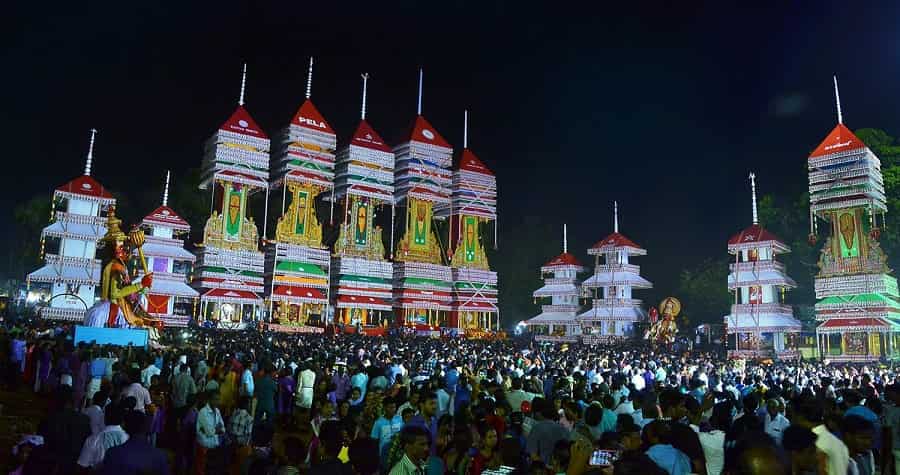
How to reach here: The nearest railway station which is Kayamkulam is just 5 kms away. The nearest airport is Cochin which is at a distance of 85 kms from Alappuzha.
There is a famous temple which is dedicated to the goddesses Bhagavathi which is at a distance of 5 kms from Kayamkulam that is the Chettikulangara Bharani Temple. In February or March which is the Bharani asterism, the most important festival takes place here. At the temple almost all types of folk arts are being performed, the Kathakali performance is there all night which is recommended as a must see for Kathakali buffs.
The ‘Kettukazhcha’ and ‘Kuthiyottam’ are the main rituals of the festival. A procession in which rigorous ritual penance is carried out by young boys is ‘Kuthiyottam’. The procession in which the young boys dance in trance is accompanied with music, traditional drums and glittering ornaments parasols. It too commences with brightly and colourful decorated parade of wide array of structures where the smaller ones have chariots and the taller ones have horses. The temple during the festival of the Chettikulangara Bharani draws crowds for watching this colorful attire of the festival.
Also Read: Places to Visit in Munnar
Easter
- Region: Kerala
- Popular for: Self-denial period of fifty days.
- Held on: April
- Honor of: Jesus Christ
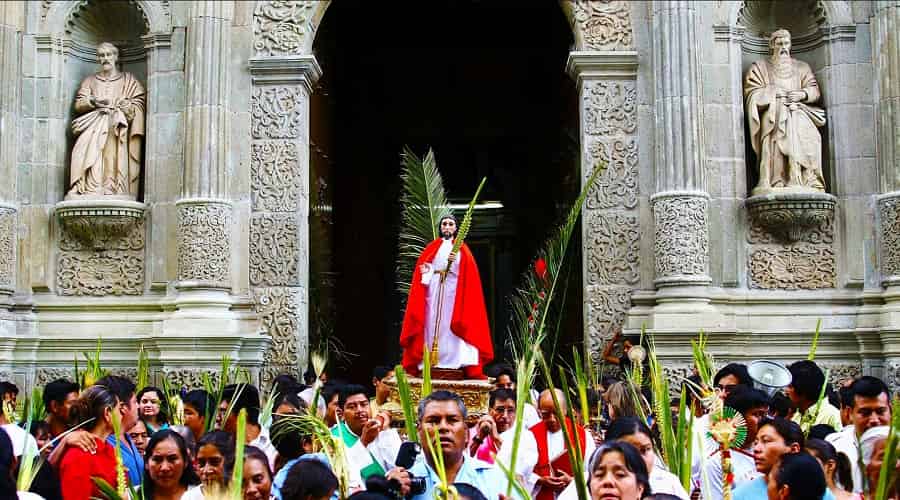
Easter is one of the traditional and historical festival of Christian religion. This festival is rejoiced to honor the very essential principle of Christian religion. This festival is celebrated by millions of Christians over the world because this day is a renaissance of Jesus Christ. People consider it as a divine day which is a sign of conquest of life over death. In fact, it is the renaissance of Jesus that happened during the fest of Jewish of neglect & though in the previous era Resurrection, Christianity and neglect were rejoiced by the Christians of Jewish on Nishan’s 14th day (Jewish month). Afterwards, on Sunday Easter came in between twenty second March and twenty five April. The Easter Sunday includes Jesus’s Resurrection and death, Crucifixion and Passion’s nostalgia. In Kerala also Easter festival is rejoiced by huge enthusiasm and energy as is rejoiced by other people over the world. In each corner, where followers of Christianity celebrate the Easter, even if the population if twenty three or thirty two million.
Within the Kerala state, Eater festival is divided into the 4 different periods beginning by Lent. In this period, Christian people fast for forty days in preparation for Christ’s renaissance. After this, the divine week comes in which people follow Friday, Thursday, Sunday and Saturday. 3rd period of Eater is considered as ‘Octave of Easter’ which means the days of custom Baptism. The final Easter period is paschal season; the duration of this period is around forty days sometimes it extends. After the completion of these Easter periods, Christians arrange an event in which as per the tradition they wash the holy feet of the Lord, this custom is practiced to get everyone together and to articulate love for everyone. In majority of Christian houses, the very spiritual event of paschal is usually arranged. Later after supper, people cut the Cross cake in pieces, after that each piece of cake is dipped in the sauce and then served to the family members. After the Holy Thursday comes Good Friday that is considered as a sorrow day, on that day all the Churches of Kerala till the afternoon stay empty. All services practiced in the Churches are in the afternoon, particular acerbic drink is distributed among the people; this drink is made by vinegar and leaves.
On the next day is Saturday, this day is believed to be lamentation day. On that day not even one service is practiced for the entire day in the Churches. All the Churches of Kerala stand in total loneliness. During the night, at 10am, the Christians gather in Churches to rejoice the Easter Vigil. The entire Kerala state gets lit up, entire darkness runs away due to the glowing Church’s candle; people express their feelings and fate through lighting the candles. This is a silent emotion that showcases renaissance. The sound of the Church’s bells adds melody in the whole silent environment of Kerala. The complete festival ambience becomes blissful. After that next day of Easter rises up. People celebrate it quietly; they don’t show much excitement of celebration because it is a more of a spiritual day. This is day when all the members of the family come together and they visit neighbors and relatives. The special food of Easter festival is Appam, for the Kerala’s Christians Easter festival includes a grand breakfast. Appam is made with mutton stew or chicken, rice powder and steamed cakes and bananas. To wish each other, people say Hallelujah.
Edathua Perunnal
- Celebration: Kerala, Alappuzha.
- Activity center: Edathua shrine
- Festival period: From the month of April 27th till May 7th.
- Site: Edathua Church
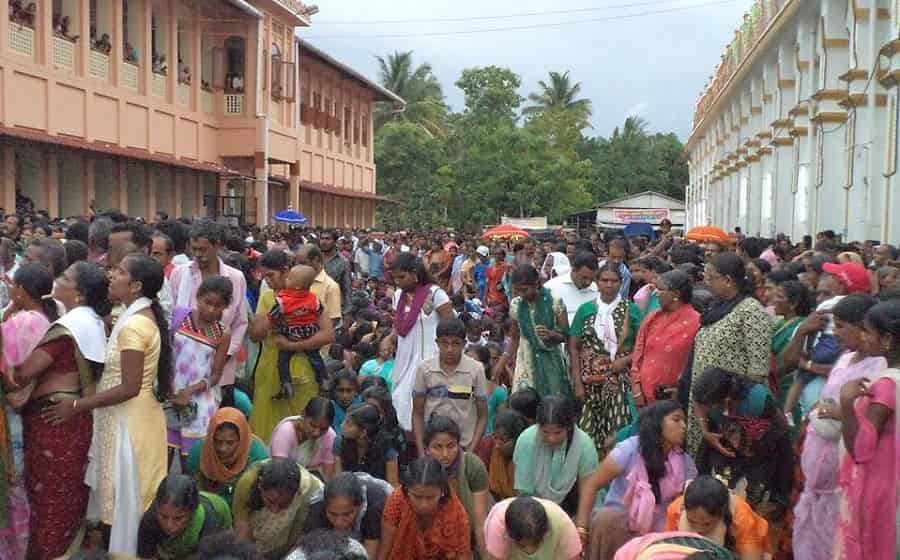
Over Pamba River’s bank the massive shrine of Edathua is situated at the Alappuzha’s southern east which has the resemblance of Medieval Europe’s churches. Edathua Perunnal is the annual festival which starts on 27th April along with the opening ceremony that goes with flag hoisting and the festival concludes on 7th May.
During the Festival of the Edathua Perunnal the sculpture of St. George which is decorated in gold and it is positioned on the basilica’s center point. During this festival devotees come and visit here in large numbers and, related rituals and prayer take place here during these days.
Also Read: Popular Honeymoon Destinations in Kerala
Ettumanoor Festival
- Celebrated in: Kottayam, Kerala
- Centre of activity: Ettumanoor Siva Temple
- Held in: February-March
- Duration: 10 days
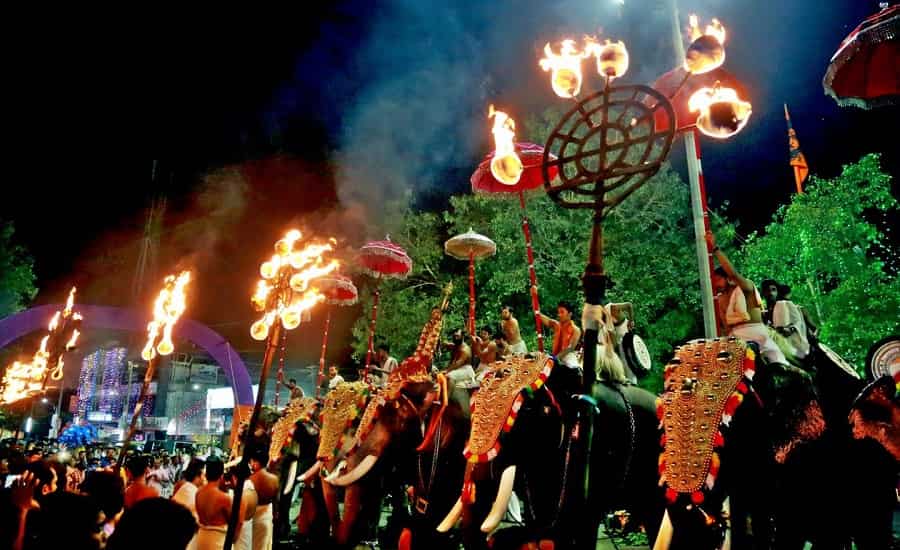
At a distance of 12 kms from Kottayam, is the Ettumanoor Siva Temple which is famous here. This temple is the best example of a superior dexterity and craftsmanship of the ancient architecture in Kerala. This temple is dedicated to Lord Shiva; this is a legendary temple where the Pandavas and the sages used to worship. Lord Shiva derived its name from the name ‘manoor’ which is the home of deer. This temple has the most wealthiest and valuable procession of Devaswom in Kerala, which is carried on the Ettumanoor Festival. The temple which is facing to the west has a circular sanctum that is covered with kalsam which is a conical copper plated roof. The front of the temple which is mukhamandapam bears images of two Nandi, in which one is made of metal and another is made of metal. Although it does not have a shrine of Parvati, the stern of the sanctum is honored as Pravati’s shrine. On the western entrance of the temple is the work of the craftsmanship that portrays the paintings of the dancing Lord Shiva. Here this temple also possesses the shrines of Ganpati, Dakshinamurthy and Saasta. The passage around the sanctum which is rectangular bears wood carvings portraying the legends from the Bhagavata Purana and Ramayana.
Ettumanoor Festival is a ten day festival held in the temple in the Malayalam month of the Kumbham which is February-March and this festival ends on the Ardra asterism which is the temple’s annual festival. This festival is also very well known as the Aarattu festival which is celebrated in a large scale. People come here in large numbers to enjoy the rituals and the performance which are held in the Ettumanoor Mahadev temple during the Ettumanoor Festival.
The 10th day is the most important day of the Ettumanoor Festival, while on the 8th day there is the procession of the image of the lord Shiva where this is taken to the north east side of the temple which is decorated beautifully. The unique treasure offered by the Maharaja of Travancore is shown on display in the temple during the festival that includes the seven and a half elephants that represents the guardians of the cardinal directions or the Ashta Dikpalaka. These elephants are in the height of 2 ft in which the eighth elephant is a foot high, and these are made of 13 kgs of gold.
All these factors make the Ettumanoor Festival the most stunting and the richest festival in Kerala and you should take a chance to attend this festival when you visit Kerala during this festival which is in February or March.
Gramam Village Fair
- Celebrated in: Kerala
- Centre of activity: Kovalam Beach Resort
- Held in: January
- Main attractions: Performances of Classical Art Forms.
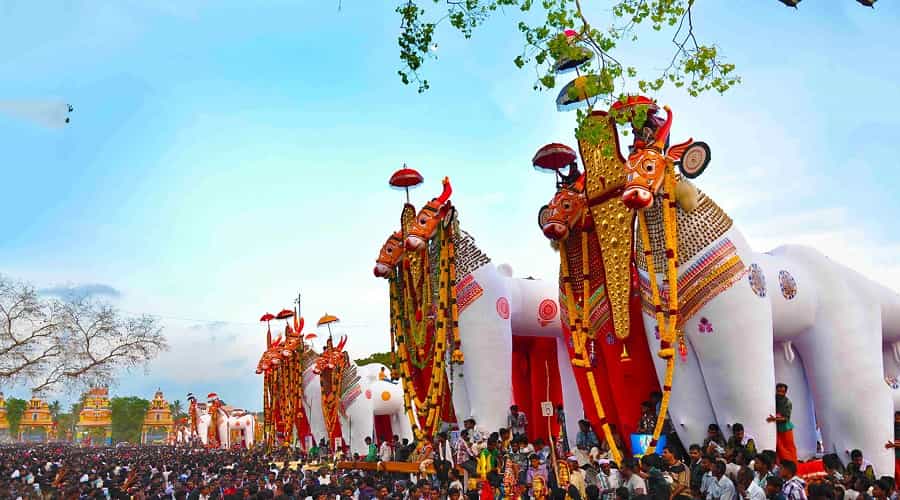
The nostalgic recreation of the era of bygone which has ethnic charm and rustic simplicity represents the Gramam – The Village Fair. This is held on the Kovalam Beach, in the month of January, this resort is at a distance of 16 kms from Thiruvananthapuram city, this is the replete with the traditional Nalukettu and also an archetypal village of yore. Here a glimpse of Kerala’s rich culture and past is provided by the artisans, astrologers and sorcerers, the classical art forms are presented in the evenings.
The Nalukettu is the traditional architecture which was recreated, the upper class of homestead that is the ‘tharavadu’, the mansion was recreated using tiles and wood with courtyard which is open from the centre, massive pillars, dormer windows and corridors all are designed in the Kerala Style Architecture. Inside there is a display of a wealth of antiques, the display also includes the priceless furniture of Sandalwood, Mahogany and Teak, and there are also Spice Bowls, Shields, Jewellery Boxes, Ethnic Jewellery, and Swords Wielded of yore which are shown in the show and the Exquisite Paintings. The remembrance of the bygone era can be seen from the Palmyra Fans, Musical Instruments, household instruments and the majestic Wooden Four Poster Beds.
The decoration at the courtyard of the Nalukettu, is decorated with colorful ‘Pookalam’ which looks enchanting with the belief which are in traditional Kerala attire, dancing ‘Thiruvathira’ around the tall brass lamp. The taste of the local cuisine can be enjoyed on the village tea shops which have the taste of the tender coconut, the tea or the tangy juice of lime. You can enjoy this sitting comfortably on the wooden chairs and stools, you can also taste the local delicacies like “puttu” and “kadala” which is pounded rice cake steamed in bamboo shoots that is served with a lentil dish, then is the “kappa” and “meen” which is steamed tapioca that is served with fish curry.
At the Kamalagramam the artisans enclave the stalls which sell artifacts which are handmade. You can also take a glance of the traditional handlooms, spinning wheels etc. You can pick anything here from silver to gold ornaments to coir, coconut and conch shell articles, Kerala sarees, Woven cloth, metal mirrors etc., You can also make an order to get this stuff. In the evenings the fair carries a new look, almost each and every art, martial art form and dance is performed in the open air auditorium of the Gramam – The Village Fair. The wide range of dances that are performed during the fair are Mohiniyattam, Kathakali, the folk dances like Oppana, the ritualistic folk arts like Theyyam, Pavakkoothu, Kakkarisi Natakam, Thullal, Panchavadyam and Bhajans etc. The martial art form is the Kalaripayattu.
Jagannatha (Kumbham) Festival
- Celebrated in: Kannur, Kerala
- Centre of activity: Jagannatha Temple at Madathiparambu
- Held in: February-March
- Duration: 8 days
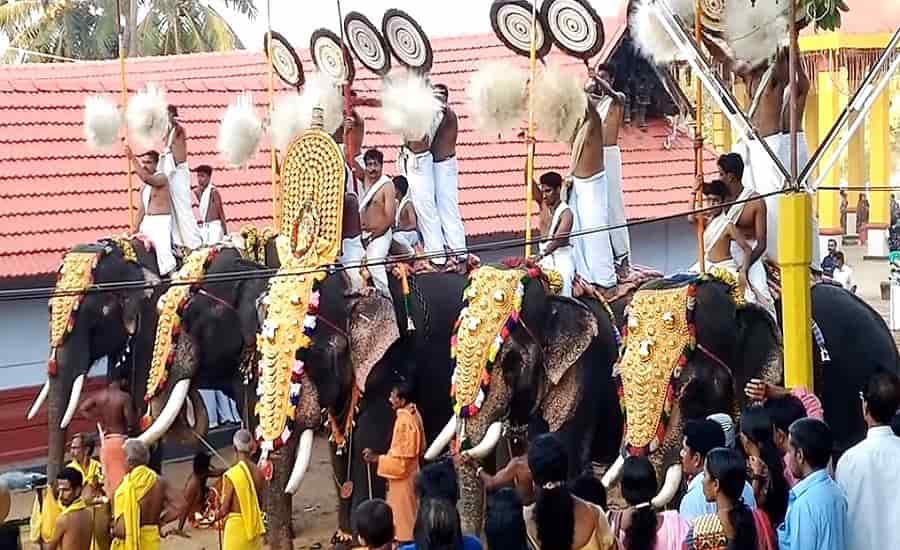
Held in the Malayalam month of Kumbham which is February-March, the eight day colorful festival is the Jagannath Festival. This takes place at the temple of Madathiparambu where the Jagannath Temple is located. This temple is dedicated to Lord Shiva. Annually from 17 February – 25th February, the quite town turns into the furry of religious conferences, Cultural programs, elephant pageantry which is a must and fireworks.
This temple is the most respected shrine of the Hindu’s in this subdivision of Kerala. The intercede marriages is a taboo in several parts of the country still, this temple is well known for conducting inter-caste marriages here. The foundation of the temple was done by a known social reformer, Shree Narayan Guru founded this temple in the precedent century. Here in the temple there is the shrine of Lord Shiva and the shrine of the originator of the Temple.
In the Jagannath Festival, which goes on for 8 days, the 7th day is well thought-out to be propitious. Here elephants are decked up with stunning clothes and fineries, which are seven in numbers, make a demonstration. Devotes throng here in huge numbers from each and every corner of Kerala during this festival. One thing that is unique about this fiesta is the spiritual conferences, which are held with social leaders, and scholars, which come from various part of Kerala to be a part of these conferences.
In the Jagannath Festival you can find mind blowing showcase of prosperity of the culture with the performances of the traditional Dance and Music which is done to bring to the notice the heritage of this region. In addition to this is the gastronomic delights, there is no festival including those in Kerala which can be accomplished without the culinary of their culture. Therefore, here is the chance to relish the delicious and traditional culinary of Kerala.
Also Read: Popular Fort & Palaces in Kerala
